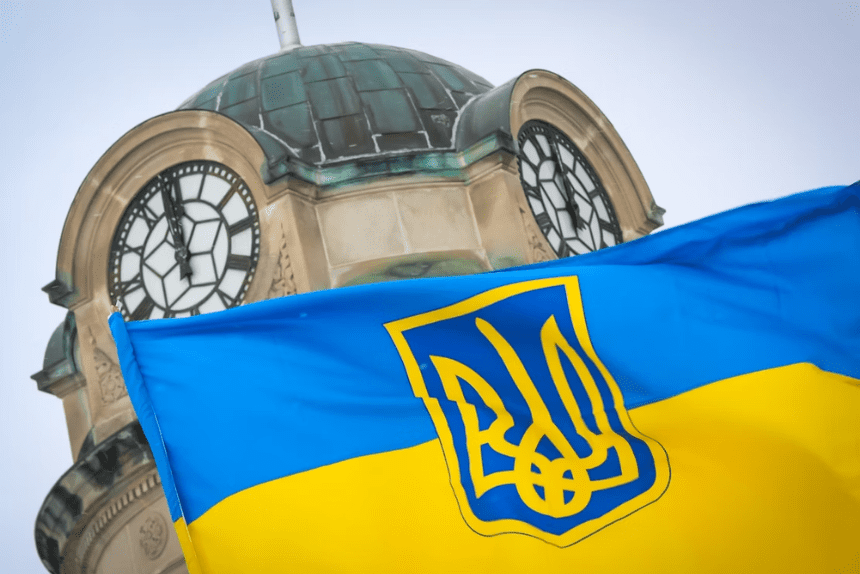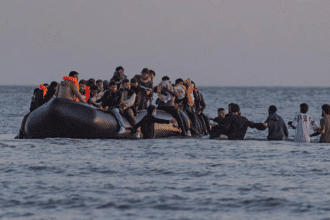The Trump-Putin Alaska Summit on Ukraine is going to be one of the most closely followed diplomatic events of the decade. Donald Trump, the President of the United States, and Vladimir Putin, the President of Russia, will meet in person for the first time in six years on Friday. For Trump, the meeting is more than just another foreign policy event; it’s a chance to keep a big campaign promise: ending the bloodshed in Ukraine.
The meeting will only take a few hours and will be held at a guarded US military base in Anchorage, Alaska. But the stakes couldn’t be higher. Trump says there is just a “25% chance” of success, but he believes that his relationship with Putin might lead to success where others have failed.
While people in Anchorage go about their summer lives, the arrival of journalists from around the world shows how important this moment is. With all of this going on, leaders from two of the world’s most powerful countries will try to find a solution to a problem that has been hard to solve for more than two years.
What does the Alaska Summit mean right now?
The Trump-Putin Alaska Summit on Ukraine is happening at a very important time. The war, which started when Russia invaded in 2022, has killed tens of thousands of people and forced millions to leave their homes. International sanctions, changing alliances, and stalled talks have all made the world a more complicated and dangerous place.
Trump has said that he can quickly terminate the war because he is a dealmaker. His attitude toward Moscow has gone back and forth between being hopeful and giving strong cautions. He has recently promised “very severe consequences” if Putin doesn’t agree to a ceasefire. He has also suggested contentious ideas like swapping land between Russia and Ukraine.
But Ukrainian President Volodymyr Zelensky is not allowed to attend the meeting. He says that any arrangement concluded without Kyiv’s involvement won’t be valid. Zelensky said earlier this week, “Our territories are illegally occupied.” “We will not leave the Donbas.” We can’t do that.
What are the biggest problems that can stop you from being successful?
There are a lot of problems that need to be solved before an agreement can be reached. Russia’s stance has been steady and unyielding. The Kremlin wants to be in charge of all of Donetsk, Luhansk, Kherson, and Zaporizhzhia. It also says that Ukraine must promise never to join NATO and cut back on its military strength.
Ukraine is just as solid in its position. Zelensky and his government said they won’t give up any land because they think that will only lead to more violence in the future. Zelensky added, “For the Russians, the Donbas is a bridgehead for a future new offensive.” This shows how worried he is that giving in will lead to more fighting.
European leaders have a big stake in the outcome, even though they aren’t in Alaska. They told Trump on a recent call that they were cautiously hopeful that he would look out for their interests. But the fact that they aren’t at the table makes people wonder if Europe’s opinion will matter in whatever comes out of the conference. Read another article on Kharkiv Airstrikes Injure Dozens
Could the Meeting Change Politics Around the World?
The Trump-Putin Alaska Summit on Ukraine could change the way countries work together. If the talks lead to even a short ceasefire, it might open the door to further in-depth talks with all the important parties, such as Ukraine and the European countries.
If Trump does well at the summit, it will make him look more like a peacemaker and give his supporters a real triumph in international policy. A lot of them support his promise to get the US out of expensive overseas entanglements.
Putin has various things at stake. A settlement that satisfies Russia’s goals might help it keep its gains in Ukraine and give it more power on the world stage. But if he makes a deal without getting big concessions from the US and its allies, he might look weak.
Why did they choose Alaska as the place?
There is a strategic and symbolic reason for having the gathering in Alaska. Because the state is located between Russia and the US mainland, it is a good midway. The talks will also be held in a controlled context, away from the unpredictable dynamics of a public setting, because they will be held on a secure military base.
Also, the choice of Alaska shows how important and short the conference is. This is not a long negotiation process; it is a short meeting with a set time to see how things go. Trump has suggested that he might be able to tell “in the first two minutes… whether or not a deal can be made.”
What happens next for Ukraine?
Zelensky is still determined to make sure that Ukraine’s voice is heard in any peace talks. He has always wanted to be directly involved in talks with both the US and Russia. Trump promised to brief him right after Friday’s meeting, even though he wasn’t there. He also hinted that there would be a three-way talk soon.
For Ukraine, the risks are very high. Any deal that includes giving up land could hurt its sovereignty and security. A lot of Ukrainians are afraid that this kind of agreement won’t deliver sustainable peace, but would instead lead to more Russian attacks.
The Way Forward After Alaska
The Trump-Putin Alaska Summit on Ukraine might not lead to any immediate progress, but it could change the speed and direction of future talks. A public promise to keep talking might help calm tensions, but if discussions break down completely, the issue might get worse.
Tatyana Stanovaya, an analyst, has said that Putin’s main goal is to make Ukraine “geopolitically neutral.” She says that a lot of people don’t realize how serious he is about his goals and how far he wants to go to reach them. This makes it much harder to find common ground.
Both sides seem to have distinct, though different, goals as they head for the summit. Trump wants a quick win in diplomacy. Putin wants to get strategic benefits without seeming to back down. We don’t know yet if those aims can come together in a way that helps Ukraine or at least stops the fighting.
In conclusion
People all over the world will be paying careful attention to the Trump-Putin Alaska Summit on Ukraine. The stakes go far beyond the current crisis. They include global alliances, economic stability, and the future of diplomacy between countries. It will depend on how willing both leaders are to work out their differences, whether this meeting brings peace, keeps the impasse going, or causes further problems.








